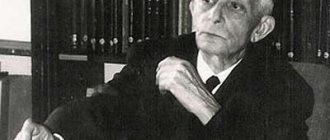: Reading time:
Let's figure out what an unfinished or unclosed gestalt is and how to get rid of it, with psychologist Yulia Nosova.
What lies behind the fashionable expression “unfinished gestalt” in psychology? Scientifically speaking, this is a broken contact cycle. Simply put, an unclosed gestalt is a situation that has not been brought to its logical conclusion, an unsatisfied need. A bummer, to put it simply. The human brain always strives to finish what it starts, and if it fails, that same unfinished gestalt arises. For some, this is a suddenly broken relationship. For some, it is a childish resentment that arose due to the refusal to buy a dog, a doll, or a car.
The human brain always strives to finish what it starts, and if it fails, that same unfinished gestalt arises.
It does not matter due to what need, material or emotional, this situation arose. Much more important is how it affects the quality of our lives. An unmet need is an express ticket to neurosis. It’s good if it’s just an everyday story that can be corrected. We bought it, repaired it, found it, moved on and moved on in stability and peace. It’s much more difficult when it comes to gestalts in relationships. Resentment, anger, sadness, grief - these are the components of an incomplete gestalt, necessarily seasoned with unspokenness, unlivedness.
At best, this leads to chronic discomfort that poisons our existence. Sometimes to us, sometimes to the entire immediate environment. Imagine an adventure lover who failed to find treasure on his trip to a wonderful island. He is so obsessed with the treasure that he now dreams about it day and night. If the family is “lucky”, every vacation he will go to this island until the end of his days or until the treasure is found (read, the gestalt is closed). If the family is not so lucky, all its members will travel to the ill-fated island. And it’s good if they have the opportunity to lie on the beach while this adventure lover is looking for the treasured chest.
What is Gestalt
Gestalt is a Gestalt/Merriam-Webster whole that is made up of many components but is more than the sum of its parts.
To put it simply, a car is a gestalt, but a mountain of spare parts is not. The term gestalt itself can be translated from German as “figure,” but in this context it is more correct to designate it as “integrity.” The concept underlies Gestalt psychology. It was popularized Gestalt psychology / Britannica by German psychologists Max Wertheimer, Wolfgang Köhler and Kurt Koffka at the beginning of the last century. They tried to understand how the brain manages to adequately perceive a lot of chaotic data. For example, why do we define a melody in a different key as the same one, and not as a set of sounds or a different motive?
One of the first experiments of Gestalt psychologists showed that two flashes of light, lit alternately at different points, are perceived as one light moving from place to place. That is, you can see movement where there is none.
Later, the concept of Gestalt extended beyond the processes of perception. It has come to be used to explain how we make decisions, learn and think. According to the ideas of Gestalt psychologists, the brain “catches” certain images and forms holistic pictures Wagemans J., Feldman J., Gepshtein S., et al. A century of Gestalt psychology in visual perception: II. Conceptual and theoretical foundations / Psychological Bulletin - gestalts. At the same time, our motives and expectations have a great influence.
Examples of open gestalts in relationships
A dream unrealized in childhood will lead to the fact that an adult may try to realize it with the help of his child, without even asking his opinion. Will a child who lives life for his parent be happy?
An adult who received little attention and love in childhood will intensively receive this from the family he himself has created. For example, look for the same parent in a partner who was so missing in childhood. How happy will such a marriage be?
An adult who received little attention and love in childhood will intensively receive this from the family he himself has created.
A partner who was suddenly left will constantly relive the breakup, trying to find its reasons. So, a man can begin to change partners one after another, proving to his ex that he is still great, so that she will regret leaving him. A woman will begin to surround herself with the external attributes of a successful life, showing her ex or homewrecker that she is even better settled, even happier. All this suggests that the situation has not been lived through, has not been released, and the gestalt in the relationship has not been fully completed. Is it possible to build new ones while emotionally remaining in the old ones?
How does modern science relate to Gestalt?
The first Gestalt psychologists only found some patterns in the functioning of the human brain, but did not explain their origin. However, neurophysiological observations helped to do this.
Since the 1950s, Hubel DH, Wiesel TN Brain and visual perception: the story of a 25-year collaboration on perception studies have been conducted. Neurons have been discovered that respond to complex stimuli. For example, on the face in general, and not on features such as the shape of the nose, eyes, and others.
Further research has shown that we perceive the whole picture much earlier than we perceive its individual components. It is enough just to look for a moment at the image of a forest, and we will immediately say that there are trees in front of us, but we will not notice whether they are maples or oaks.
In the early 2000s, scientists discovered another principle of how the brain works: predictive coding. It turns out that our mind does not analyze all information from the outside at once. First it “predicts” Wagemans J., Feldman J., Gepshtein S., et al. A century of Gestalt psychology in visual perception: II. Conceptual and theoretical foundations / Psychological Bulletin possible developments based primarily on experience rather than new data. It works like this: the brain sends information from higher neurons to lower ones, and then correlates it with data from the senses. This is done on the basis of past knowledge, that is, certain holistic images or, in other words, gestalts.
Thus, neuroscience indirectly confirmed the hypotheses of Gestalt psychologists.
Gestalt in simple words
In everyday speech, a gestalt is often referred to as some unfinished business. An unfinished book or an unwatched film, an unsolved task or an unresolved conflict - all this is an unfinished project, in other words, a gestalt.
Speaking more strictly, from the point of view of psychology, this word denotes a structure that is perceived as a single whole. If translated from German, Gestalt is a figure, a holistic image.
Until the gestalt is closed, it is difficult for a person to feel calm or happy, even if it seems that this is not the case.
For clarity, here are a couple of simple examples. Suppose a certain couple breaks up on the initiative of one of the partners. The second one cannot cope with the situation so easily, he scrolls through it in his head, looks for non-existent reasons for the separation in himself, and so on. In turn, these heartbeats and constant return to the past prevent a person from moving through life and creating new relationships. This is a gestalt that requires closure.
Another situation: a specialist is offered a new job, position, area of activity that is still unfamiliar to him. A rash refusal in the future entails endless reflection on the topic of what could have been “if”. This prevents you from working and achieving new heights in your career, which means that such an obstacle should be eliminated, “closed.”
All this happens at the subconscious level and an ordinary person (who does not know how to professionally delve into his head) simply does not realize all this. However, some unfinished gestalts “sit in the head” very deeply and haunt us (sometimes throughout our lives), leaving their mark on behavior.
There are a lot of similar examples that can be given. Problems in finances and personal life, career and relationships can have roots that go deep into the past. The main thing is to understand for yourself what situation requires closure, understand where it came from, and work to correct it. Gestalt therapy helps a person without special education with this.
Why do you need to close gestalts?
Research by Gestalt psychologists is useful not only from a theoretical point of view, but also from a practical one.
It helps maintain mental health
Gestalt psychologists believe Raffagnino R. Gestalt Therapy Effectiveness: A Systematic Review of Empirical Evidence / Open Journal of Social Sciences that human needs successively replace each other when they are satisfied. These can be either natural needs such as thirst or hunger, or aspirations, dreams, plans for life.
If these needs have not been realized, they begin to disturb us and drain the resources of the brain and body. Such needs came to be called “unclosed gestalts.” They cause feelings of unresolved anger, pain, anxiety and other negative emotions.
This helps you stay organized and finish what you start.
Unclosed gestalts greatly influence all areas of our lives. This demonstrates the effect that was discovered by Zolotova N.V., Mazilov V.A., Bazikov M.V. The scientific heritage of B.V. Zeigarnik in domestic medical (clinical) psychology / Yaroslavl Pedagogical Bulletin, Soviet psychologist Bluma Zeigarnik. The researcher noticed that waiters remember current orders well and almost immediately forget completed ones.
The Zeigarnik effect shows that unfinished tasks are strongly imprinted in our memory. They haunt us, as the brain periodically reproduces them. Therefore, it is important not to delay resolving issues that concern you. Unclosed gestalts not only harm the psyche, but also distract from other matters.
It calms us down and gives us a feeling of control over the situation.
According to predictive coding theory, the brain's ultimate goal is to learn to predict a situation as accurately as possible. The correct guess is reinforced by a dose of dopamine. Remember the rapture you feel when you say: “I knew it!”
A problem solved on time brings a feeling of satisfaction and the feeling that you did everything right, because the brain’s prediction was confirmed.
Do you find yourself in a certain type of situation all the time? Do you encounter a certain type of person? Do you have a feeling of déjà vu? Feeling like you are constantly stepping on the same rake? One of the reasons for this phenomenon is unclosed gestalts.
Gestalt: remember everything
The word “gestalt” itself translated from German means “integral form, image, structure.” Therefore, when they say that the gestalt is not closed, they mean that some situation in the past remained unfinished. And this does not allow our subconscious to put an end to that story.
Relatively speaking, the subconscious worries, creates tension within us, and most importantly, forces us to behave in a certain way.
- Firstly, so that, against our will, we look for or ourselves reproduce situations similar to those that remained unfinished, unprocessed, unlived in our past, in which we did not receive something important for ourselves. At the same time, we may not even remember the situation itself.
- Secondly, so that we look for people who can become a replacement for those who were once significant to us and to whom we were able / unwilling / afraid to say or do something.
For example, often behind unfinished gestalts there are undeveloped relationships with parents. As children, we were completely dependent on them, on how good and obedient we were. In fact, obedience to our parents was a condition for our survival, so we were forced to restrain ourselves in many ways.
But unspoken reproaches, resentments, unexpressed anger towards parents and other significant adults have not gone away. They still live inside us. And the older we get, the heavier and more cumbersome this baggage becomes.
We spend a lot of energy carrying all this “good” inside us. And all because we learned in childhood: expressing your feelings and speaking directly about what you think is dangerous.
But how can we remember everything that has happened to us in life and that needs to be completed? After all, this is simply impossible! And what to do with these unclosed gestalts? How to complete them?
Yes, it is truly impossible to remember absolutely everything. But this is not necessary: and what right now hurts the heart and is rushing out is enough to start work. And everything less significant will be remembered later, after we have dealt with the most pressing things.
In addition, the situations that worry us can, in most cases, be divided into groups. And by working through the most disturbing situation in a group, we are actually working through other situations of this type.
Further. You definitely need to understand that closing the gestalt does not mean running to relatives or other “offenders”, starting to wave your fists, proving your truth, and sorting things out with them in a raised voice. Such behavior will be extremely unecological not only for our counterparts, but also for ourselves. Especially considering that some of the “offenders” are probably no longer alive.
Closing the gestalt means working through your past and reliving it. This is working with yourself, not with other people. The results of this work - the changes that have occurred within us - will definitely be felt by those around us on a non-verbal level. As a result, not only our relationships with them will change, but also our quality of life.
So, what needs to be done to close the gestalt?
There are three main steps.
1. You should begin to work through one of the situations that lie on the surface and are disturbing right now. It’s easy to isolate them: you need to take a piece of paper and a pen and write down everything that touches a nerve, causes irritation and indignation.
2. Next, we need to think through and list point by point what exactly we don’t like in this situation . How, from our point of view, everything should have been and why. What should this situation teach us, what life experience should we gain in it, etc.
And now that we have all the information about the “ideal” development and completion of this situation, we need to dive into it as deeply and fully as possible and live it again. And in the process of this re-living, we can throw out those feelings and emotions that we wanted to throw out, but were unable to do so. To say what they wanted to say, but never said. To do what they wanted to do, but never did.
An important note: living through a situation should take place not only and not so much at the level of the mind, but at the level of feelings and sensations!
And further. Don't try to complete this exercise the first time. Closing the gestalt is working with trauma, and this process is very unpleasant and painful. Not everyone can do this in one go. Therefore, it is important to give yourself the opportunity to immerse yourself in the situation as many times as necessary in order to finally exhaust it.
The main thing is that in the end there is nothing left unsaid, misunderstood, or unfinished. As a result, you must deal with all the regrets, resentments, anger - everything that weighs on you.
You can understand that the gestalt is complete only through experience - the next time you start living through this or a similar situation again and do not experience any discomfort.
3. After this, it’s good to reconsider your life from the perspective of new experience - at least the main, turning points. This task is very important because it helps change the way you think about yourself. As a result, the perception of oneself as a victim, the feeling of one’s own helplessness and worthlessness will noticeably decrease. And at the same time, we will begin to feel more confident, more experienced and wise people.
Why is this technique effective?
Firstly, working with gestalts destroys automatisms, that is, the habit of acting in a certain way in similar situations, without thinking about what, how and why we are doing. Secondly, it reorients thinking, feeling and behavior.
The destruction of automatisms occurs when we analyze what we did wrong in the past and work through alternative options for our actions, looking for the most suitable way for us in a particular case to respond to the situation.
That is, before performing a habitual action, we take a pause and begin to think about how else we can perform it. In the process of breaking the pattern, a reorientation of our old type of thinking to a new one occurs. Having started to think differently, we experience new feelings, and after them a new way of reacting and behaving is developed.
Help Masha return her parental “debt”
Let's look at a specific example of working with undeveloped relationships with parents as the most common and “sick” case. Let's take my client - let's call her Masha - and walk with her through the above three steps.
Masha is an experienced client, she understands and realizes a lot of things, so her example will be indicative. What follows are my comments, observations and excerpts from Masha’s diary of working on herself (published with her permission).
1. Study the situation
Masha is already well over thirty, but she still carries in her heart a grudge against her parents - that they did not give her enough attention, care, and love. And she is still waiting for them to “come to their senses” and finally return their “debt.” This prevents her from building relationships with other people and arranging her personal life (she is not married and lives with her parents). And this is what Masha wants to change first of all.
“What don’t I like about my relationship with my parents?
1. I don’t like the fact that I was and remain an unloved child.
2. I don’t like that in 99% of cases my parents (especially my mother) criticize me, humiliating me, ridiculing me and, it seems to me, always rejecting me.
3. I don’t like that when communicating with other people, I expect from them the love that my parents did not give me (I periodically catch myself doing this). And when I don’t get it, I begin to be capricious, like a small child, to do dirty tricks in order to take revenge on people for not giving me the love and attention that I need, and in the end I break off relations with them. Well, or they break off relations with me.
It turns out that even with other people I build and lose the same relationships as with my parents? It turns out that I am stepping on the same rake and moving in circles? And to break this vicious circle, do I need to change my attitude towards my parents? Perhaps this is the lesson that I should learn from this situation that repeats itself over and over again. The lesson is that I need to become emotionally independent, not dependent on my parents, to mature emotionally.
What do I ideally want? It is important for me that my parents give me warmth, take an interest in my affairs, praise me, and support me. What will this give me? It seems to me that then I will finally be able to feel safe, which means I will become more independent and will be able to communicate with other people on equal terms. The trouble is that I cannot force my parents to change their attitude towards themselves. It turns out that all I can do is change my attitude towards them. Maybe at least then something will change?”
2. What you don’t like about the situation and how to change it
When Masha, despite fear and resistance, nevertheless plunged into despair because of her relationship with her parents and when she heard within herself their usual: “You won’t succeed anyway! Yes, your hands are growing from the wrong place. What can you do? What else can we expect from you? - Resentment and indignation overwhelmed her so much that she could not stand it.
She began to sob, and claims that she had never dared to present to her parents finally poured out of her (she even now shouted them to herself, and not out loud, which is quite safe and at the same time no less useful). These were accusations of coldness, cruelty and harshness, indifference, and insensitivity. The fact is that they refused to take her to clubs (and she really wanted to learn to draw and play the piano as a child). The fact that they rarely let her go out into the yard with other children.
She complained that she always lacked frankness, heart-to-heart conversations, their affection and warmth. She admitted that so many times she wanted to come up and hug her mother or tell her something deeply personal, but every time she pulled herself together and forced herself to keep her distance and move away, fearing ridicule and insults.
It must be said that Masha continued this mourning for herself for several months and continues to this day. At first she was embarrassed by this, but gradually this embarrassment passed. Because, throwing out what had accumulated, at some point she began to feel relief - as if she had begun to lift a heavy load from her shoulders. And as Masha felt better, changes began to occur in her life, albeit slowly.
Now she is no longer fixated on her dislike. Although, of course, she is sad, thinking about how great it would be if she grew up in an atmosphere of love and care. But this is just sadness, and not serious mental pain. The sadness that always appears when you think about an important loss.
Masha's focus gradually shifts from her parents to her own life. She began taking piano lessons (which she dreamed of as a child and from which she now enjoys greatly), going out in public more often and communicating with them (instead of standing on the sidelines, as before), calling her few friends more often and making plans for how best to expand her social circle and what kind of people she would like to include.
She learns to perceive herself as an adult and treat herself with respect. This is still difficult, but there is already some progress. It is interesting that Masha’s parents also felt these changes and began to treat her with less disdain, sometimes they even turn to her for advice.
3. Reassessment of life
Now that Masha’s emotional dependence on her parents is decreasing, she is ready to begin to reconsider her life. This is what she managed to write down in her diary and discuss with me:
“Now, looking back, I can say that the coldness and detachment of my parents, despite the pain caused, even helped me in some way. For example, when I first entered school, it was much easier for me to get used to it than many of my classmates who grew up in hothouse conditions and had a carefree childhood. For them, sitting through classes and then doing homework was a real punishment, but somehow I immediately became interested.
A world opened up before me much more welcoming than what was waiting for me at home. I went to school with pleasure, studied with pleasure and graduated from school with a medal. There were no problems with entering the institute either.
And I started working already at the institute, and did not wait for graduation, like my fellow students from wealthy families. Because I was tired of my parents calling me a dependent, and in general I wanted independence. And by the end of the institute, I already had experience and work experience, so after my diploma it was easier for me than many of my fellow students to get a job in a good company with a good salary.
At school, however, I had no friends at all among my classmates: they seemed like children to me. But I always had friends who were older, more well-read, and deeper than me: I was interested in talking with them, learning something from them, learning from them (it was impossible to learn this from my parents due to their closed nature), adopting experience .
So it turns out that, due to lack of attention from my parents, I turned out to be much more developed than my peers, I matured earlier than them, it is easier for me to adapt to changing conditions and cope with difficulties, because I have no one to count on but myself. And for the same reason, it’s generally easier for me to get settled in life.
It turns out that all my life I looked at only one side of the coin - at the pain that my parents caused me. And I didn’t even notice the advantages that this difficult situation gave me.”
Completing gestalts is, of course, slow and labor-intensive work. But in order to deal with old traumas and improve relationships with others, it is worth making the effort.
From the editor
Oh, these relationships with our parents... How many nerve cells they killed each of us! It seems that the topic of conflict between fathers and children is inexhaustible. No matter how old you are - 13, 23 or 53 - you one way or another remain dependent on your parent’s opinion. Olga Yurkovskaya tells how to leave past grievances in the past and learn to live your own life : https://www.psy.systems/post/pyat-sovetov-kotorye-pomogut-vystroit-zdorovye-otnosheniya-s-roditelyami.
Writer Olga Savelyeva shares a story from her youth that everyone can understand and empathize with. At the age of 18, she first invited friends to her dacha, but at the last moment it turned out that she was not destined to be the hostess of the evening: her domineering mother refused to leave and received the guests herself. What to do when you don't decide anything in your life? Read Olga's story: https://www.psy.systems/post/apelsinki-gosti.
Resentment towards parents, experienced traumas and other unresolved gestalts sooner or later turn into “monsters” and “ghosts” that prevent us from adequately perceiving what is happening and building healthy relationships with other people. Read about how to recognize and neutralize your “monsters” and “ghosts” in the article by psychologist Elena Areshchenko : https://www.psy.systems/post/monstry-i-privideniya-kotorye-portyat-nam-zhizn.
How is Gestalt formed?
Let's take a closer look at how destructive gestalts are formed that poison a person's life. They are usually based on unpleasant and painful situations. The memory stores them in the “Current” folder, despite the fact that they are a thing of the past. Because the anxiety caused by them is associated with the present and the future.
For example, almost any conflict causes the appearance of an unclosed gestalt. Even if it is in the past, possible consequences can affect the present. Therefore, a person tries to bring it to its logical conclusion, constantly thinks about it, and in the end only strengthens it.
And our brain marks positive situations as “completed” and sends them to the archive.
More than 100 cool lessons, tests and exercises for brain development
Start developing
How to close a gestalt
Most often, people are worried about gestalts from their relationships with their parents, but this is not necessary. Unclosed gestalts can arise in any area: friendships, work, love, study. There is only one condition - the unfinished situation is connected with a significant need and the person with whom the gestalt is connected is significant for you.
How to close a gestalt? To do this, it is better to contact a Gestalt therapist (psychologist), since in the process of work you can remember details that would be difficult for an unprepared person to figure out on their own. However, something can be done to close the gestalt without visiting a specialist’s office. To simplify your work, divide all current exciting situations into groups. As a rule, having closed one gestalt from a group, a person automatically closes all similar gestalts.
What's next? Choose a convenient time and place, retire. Yes, oddly enough, to work through gestalts you don’t need other people, much less those who are the “culprit”. And it’s not always possible to return to an unfinished relationship or meet a specific person. How to express everything that has accumulated and hurt?
Methods
Step-by-step plan for working out gestalt:
- Write down what's bothering you right now. These can be any situations and people who “enrage,” “offend,” “irritate,” etc. Everything you remember right now.
- Describe each situation point by point. Be as specific as possible about what you don't like. What would you like to change? What meaning does this situation have for you, what does it teach you, what kind of experience does it give you?
- Live the situation according to the scenario with your ending. Mentally immerse yourself in this situation, but reproduce it with the development of events that you would like to see (according to the plan described earlier). Mentally say what you would like to say, do what you would like to do, express all the suppressed emotions. Imagine your desired actions, words and reactions of your opponent. It is very important to feel it, and not just say it. You have to really live it.
You can scream and speak out loud, cry. You can come up with a replacement for the person, like taking a pillow and hitting it if that helps you, if that's what you'd like to do. At the end of the work you should not be left with anything unfinished.
After this, reconsider your attitude towards life in the present. What does new experience give you? List the benefits that this heavy burden has given you. For example: “Thanks to my parents’ overprotectiveness and thanks to the fact that they did not let me go out, I grew up as a versatile person, I have many hobbies, skills, and interests.”
At first, you will still come across people and situations from the past, but now, before you react in the usual destructive way, you can think, remember this gestalt processing and change your reaction.
There are other ways to help close and complete the gestalt. For example, free writing technique. On paper you write everything you would like to say to a specific person. Confessions, emotions, experiences - whatever you want. You don’t have to be shy in your expressions at all. Don't hide your feelings and speak directly. The letter must have an addressee. After you write, re-read it out loud, and then destroy the letter.
Note! If you didn’t manage to let go of the past the first time, then repeat the exercise. This is how trauma is processed: a person is immersed in a problematic situation again and again until he becomes indifferent to it.
Founders of Gestalt psychotherapy
The founder of Gestalt psychotherapy is considered to be Frederick Perls, a German psychiatrist of Jewish origin. He is called the creator of the three pillars of Gestalt therapy: awareness, responsibility and choice. The time when the first ideas of the Gestalt approach appeared was 1940-1950.
A rebel of his time, he opposed some of the postulates of Freudian theory and one hundred percent acceptance of it as truth.
Quote from the founder of Gestalt psychotherapy, F. Perls:
“You did not come into this world to live up to my expectations. Just like I didn’t come here to justify yours. If we meet and get along, that's great. If not, then nothing can be done.”
A look into the history of Gestalt psychology
Until the 1940s, the world of psychotherapy was dominated by Freud's method. His German student, Fritz Perls, together with his wife, revised their views on his theory. They added new concepts and slightly changed the way they communicated with the person in the session.
Gestalt Therapy : Excitement and Growth in the Human Personality is the first published book on the subject, written by him with Paul Goodman. According to its concept and principles, psychotherapy was carried out in the clinic (more precisely, just in the apartment) of the Perls.
What was this psychotherapy like? Fritz came into conflict with clients and raised a strong storm of negative emotions in them. A little later, group therapy was introduced because he considered the individual format too outdated.
On the Internet you can find rare historical footage of his Gestalt sessions, after watching which (though only with Russian subtitles, and not with Russian translation) you will understand his method:
Over time, this practice spread throughout Europe. Only the attitude towards people at the session became more loyal (what is this?). Although some avid Gestalt therapists still remain adherents of the old school and can afford to heat up the atmosphere.
Do you remember the pictures that show either a vase or the faces of people looking at each other? Some of this becomes the main figure, and some, accordingly, becomes the background for it.
Edgar Rubin studied this phenomenon. I came to the conclusion that some situations in a person’s life become the main ones and more attention is paid to them. Everything else fades into the background.
Who would be interested in Gestalt psychology?
You will be interested in Gestalt therapy if you are interested in psychology and want to:
- learn about people's relationships in order to apply this both in your personal life and at work
- learn to manage your feelings
- change your life
- cope with stress, anxiety, irritation, depression
- support yourself and find your interest
- develop and bring new things into your life
- decisions
- develop creativity and spontaneity
The “Here and Now” principle in Gestalt psychology
Gestalt is what needs to be closed in order to be happy . And the principle of “here and now” is an approach to thinking that takes its origins from the philosophy of Buddhism. By the way, Fritz Perls carefully studied Eastern culture.
The psychotherapist always asks how the patient is feeling at the moment, what emotions and feelings he has. If a person talks about the past, the psychologist tries to bring him back to the present with questions:
- What is your relationship like now?
- How do you feel when you say this?
- How can this situation be corrected today?
- How does this situation affect you now?
This creates confidence that the client has control over the problem here and now. Even if it happened several years ago.
Understanding that a person should live at a given moment and hour is very difficult for us. We often get stuck either in the past or in dreams of the future.
Therefore, there are exercises on how to learn this. One of them can be done during breakfast, lunch and dinner. We need to focus on the cutlery that we bring to our mouth; during the process of chewing food; on the hand that reaches for salt. Here and now.











